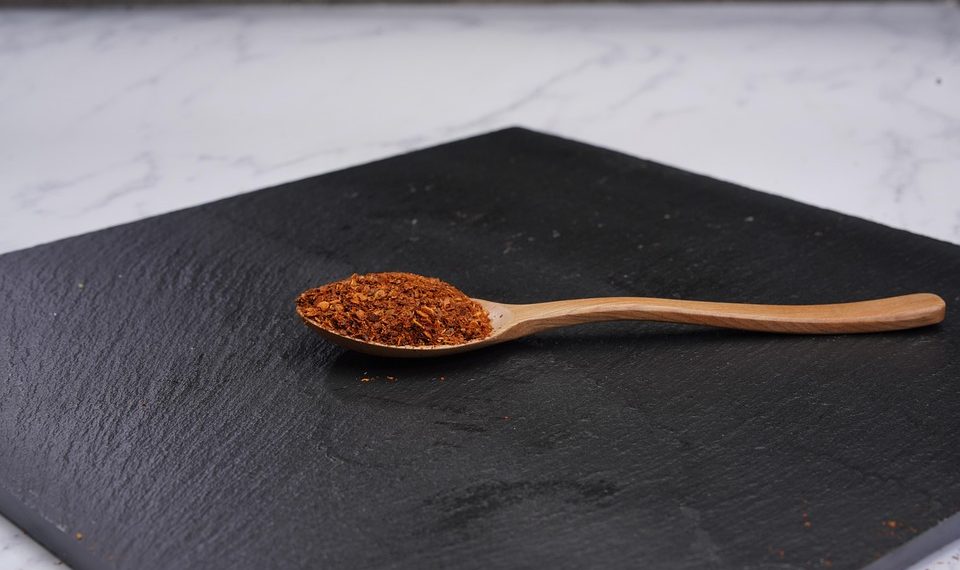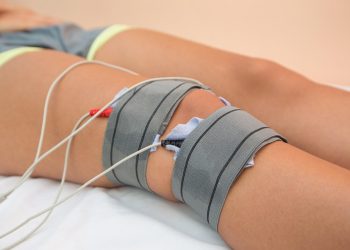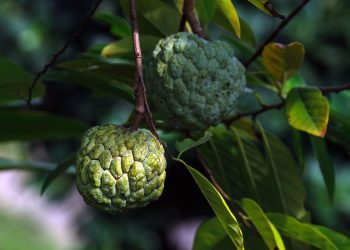Muscle Soreness Cayenne Pepper is a straightforward phrase with surprising power: it refers to using cayenne pepper, and specifically its active compound capsaicin, to ease post-workout pain and speed recovery. This matters because you don’t have to suffer through the ache after a tough session. You want to move better tomorrow — not use soreness as an excuse. And cayenne can help, safely and simply.
I write like a friend who’s tried the tricks, read the studies, and insists you deserve results. Below are seven practical, science-backed ways that muscle soreness cayenne pepper can tip the scales toward faster recovery, less pain, and more confidence in your training.
Contents
- 1. It Targets Pain With Real Chemistry
- 2. It Boosts Local Blood Flow For Repair
- 3. It Cuts Inflammation Without Flattening Your Immune Response
- 4. It Reduces Delayed Onset Muscle Soreness (DOMS)
- 5. It Works Well With Other Recovery Tools
- 6. It Gives You A Drug-Free Option With Low Side Effects
- 7. It’s Affordable, Accessible, And Easy To Use
- Putting It Into Practice: A Simple Post-Workout Plan
- What The Experts Say
- Practical Precautions And When To See A Doctor
- Bottom Line
- FAQ
1. It Targets Pain With Real Chemistry
Capsaicin — the hot molecule in cayenne — binds to TRPV1 receptors, the same tiny switches that tell your nervous system “ouch.” Repeated activation by capsaicin desensitizes these receptors, which lowers the pain signal coming from sore muscles.
This isn’t folklore. Reviews and clinical reports show topical capsaicin reduces musculoskeletal pain, and reputable sources like the Mayo Clinic discuss capsaicin’s role in topical pain relief. When you use muscle soreness cayenne pepper in a cream or oil form, you’re using chemistry to quiet the volume dial on pain.
How To Use It Safely
Use a properly formulated topical product labeled for pain. Apply sparingly at first and wash hands thoroughly afterwards. If you have broken skin or a sensitivity to spicy foods on your skin, skip it. Start with low concentration to build tolerance.
2. It Boosts Local Blood Flow For Repair
Cayenne pepper increases circulation at the application site. More blood means more oxygen and nutrients to the damaged muscle fibers, and improved clearance of metabolic waste — both keys to repair.
Athletic trainers often recommend heat and massage for this reason. Topical capsaicin mimics that circulation boost without needing a heating pad. That circulation helps the early stages of recovery, so muscle soreness cayenne pepper isn’t just masking pain — it’s creating a friendlier environment for healing.
3. It Cuts Inflammation Without Flattening Your Immune Response
Inflammation after exercise is normal — it helps rebuild muscle. But when inflammation hangs on too long, it steals recovery time and performance. Capsaicin modulates inflammatory pathways rather than bluntly suppressing them like NSAIDs sometimes do.
Studies show capsaicin can lower cytokines and inflammatory mediators locally. That subtle regulation helps shift the balance toward resolution, which is exactly what you want after a hard workout. Thoughtfully used, muscle soreness cayenne pepper helps tamp down excessive inflammation while allowing the natural repair work to finish.
Why That Matters
Using anti-inflammatories indiscriminately can interfere with muscle adaptation. If you’re chasing strength or hypertrophy, choose tools that support recovery without sabotaging gains. Capsaicin’s mechanism gives you that middle ground.
4. It Reduces Delayed Onset Muscle Soreness (DOMS)
DOMS — that deep, delayed ache after unfamiliar or intense exercise — is the enemy of consistency. Research on topical capsaicin and related compounds shows reduced subjective soreness scores and faster return-to-comfort after eccentrically-loaded workouts.
I’ve seen athletes trade in days of limping for manageable stiffness. When you introduce muscle soreness cayenne pepper protocols after particularly brutal sessions, you’re giving your body a legitimate chance to bounce back quicker without losing your next training block.
Practical Routine
- Clean the skin.
- Apply a thin layer of topical capsaicin cream to the sore area.
- Keep the application to twice daily for 3–5 days after intense workouts.
- Monitor for irritation and discontinue if redness or burning persist.
5. It Works Well With Other Recovery Tools
Cayenne isn’t a lone wolf. It pairs beautifully with foam rolling, compression, sleep, and nutrition. Better circulation from capsaicin enhances the benefits of massage and light movement. Reduced pain makes it easier to maintain mobility work and sleep deeply — and both are huge for recovery.
Use muscle soreness cayenne pepper as part of a recovery toolbox. It’s not a miracle cure, but when combined with consistent sleep, protein intake, and smart programming, it amplifies other efforts.
Combining Without Conflicts
Avoid layering on other strong topical agents at the same time. If you’re using an NSAID gel or icy menthol rub, separate them by several hours to avoid irritation. Hydration and protein intake remain essential.
6. It Gives You A Drug-Free Option With Low Side Effects
Not everyone wants or can take oral painkillers. For those who prefer drug-free strategies, topical capsaicin is a reasonable choice. Side effects are generally limited to transient burning or redness where it’s applied.
For people managing chronic conditions or concerned about long-term NSAID effects, muscle soreness cayenne pepper provides a targeted, local approach that sidesteps systemic exposure. Of course, consult your physician if you’re pregnant, breastfeeding, or on complex medication regimens.
7. It’s Affordable, Accessible, And Easy To Use
Cayenne products are widely available at pharmacies, online, and in some natural health stores. There are high-quality creams and patches designed specifically for pain relief, and many are reasonably priced.
This accessibility means you can keep a small tube in your gym bag and use it when you need it. When pain is predictable after certain sessions, having muscle soreness cayenne pepper on hand lets you act fast and resume life with less interruption.
What To Look For In Products
- Clearly labeled capsaicin concentration.
- Reputable brands or pharmacy-grade formulations.
- No accidental skin contaminants or added irritants like strong fragrances.
- Patch options for hands-free wear during sleep or travel.
Putting It Into Practice: A Simple Post-Workout Plan
Treat it like hygiene: plan for recovery before the soreness arrives. After a heavy session, prioritize light mobility and hydration. If soreness appears the next day, clean the skin and apply a small amount of capsaicin cream to the most painful spot.
Combine with a short mobility routine, 7–8 hours of sleep, and a protein-rich meal. Repeat for up to a week if needed. In many cases, muscle soreness cayenne pepper will shorten the timeline from soreness to full function.
What The Experts Say
Pain researchers and clinicians often include capsaicin among topical options for localized pain management. Reviews in pain medicine and resources from major clinics explain how capsaicin’s interaction with TRPV1 receptors underlies its benefit. Those same experts caution about skin sensitivity and recommend product quality control.
If you want to dive deeper, reading clinical summaries from established health organizations will give you the medical nuance to pair with practical use.
Practical Precautions And When To See A Doctor
Topical capsaicin is generally safe, but it’s not right for everyone. Don’t apply to broken skin, mucous membranes, or if you have an allergy to peppers. Stop use if you experience severe burning, intense redness, swelling, or signs of infection.
If your pain is accompanied by swelling that lasts, loss of strength, or unusual neurological symptoms, seek medical attention — these aren’t typical post-workout issues and may indicate something more serious.
Bottom Line
Bottom Line: Muscle soreness cayenne pepper offers a pragmatic, science-backed option to reduce pain, boost circulation, and speed recovery. It’s a sensible part of a recovery plan that includes good sleep, nutrition, and smart training. Use quality products, follow simple precautions, and treat it like one effective tool in a disciplined routine.
You don’t have to accept soreness as the cost of training. Try this approach with care, and your next workout might feel a little less costly and a lot more possible.
FAQ
Is cayenne pepper safe to use on all skin types?
Most people tolerate topical capsaicin, but sensitive skin can react. Do a patch test on a small area and wait 24 hours. If irritation occurs, discontinue. Avoid open wounds and mucous membranes.
How soon after applying will I feel relief?
Some people notice decreased pain within 30–60 minutes, but full desensitization often develops over several applications across days. For DOMS, use it in the early post-exercise window for best results.
Can I use it with other recovery methods like ice or NSAIDs?
Yes, but space topical agents apart and avoid combining with other strong topical rubs at the same time. If you take oral NSAIDs, discuss long-term use with your clinician. Capsaicin is generally a complementary, local option.
Will using it stop my muscles from adapting?
No — capsaicin modulates local pain and inflammation without the broad systemic suppression that can blunt adaptation. Use it to manage excess soreness, not to mask debilitating injury.
References
The Mayo Clinic provides a clear overview of capsaicin topical use and precautions, and you can read their summary here (http://www.mayoclinic.org/drugs-supplements/capsaicin-topical-route/description/drg-20066912).
National Institutes of Health hosts review articles on capsaicin mechanisms and pain relief; an accessible review on topical capsaicin for pain is available at the NIH PubMed Central site (http://www.ncbi.nlm.nih.gov/pmc/articles/PMC4143538/).
Harvard Health Publishing explains capsaicin’s role in pain management and practical considerations for users in a consumer-friendly article (http://www.health.harvard.edu/pain/capsaicin-a-hot-topic-in-pain-relief).
The Cleveland Clinic provides insight into capsaicin benefits, circulation effects, and clinical guidance for patients exploring topical options (http://health.clevelandclinic.org/capsaicin/).
Get Your FREE Natural Health Guide!
Subscribe now and receive our exclusive ebook packed with natural health tips, practical wellness advice, and easy lifestyle changes — delivered straight to your inbox.















